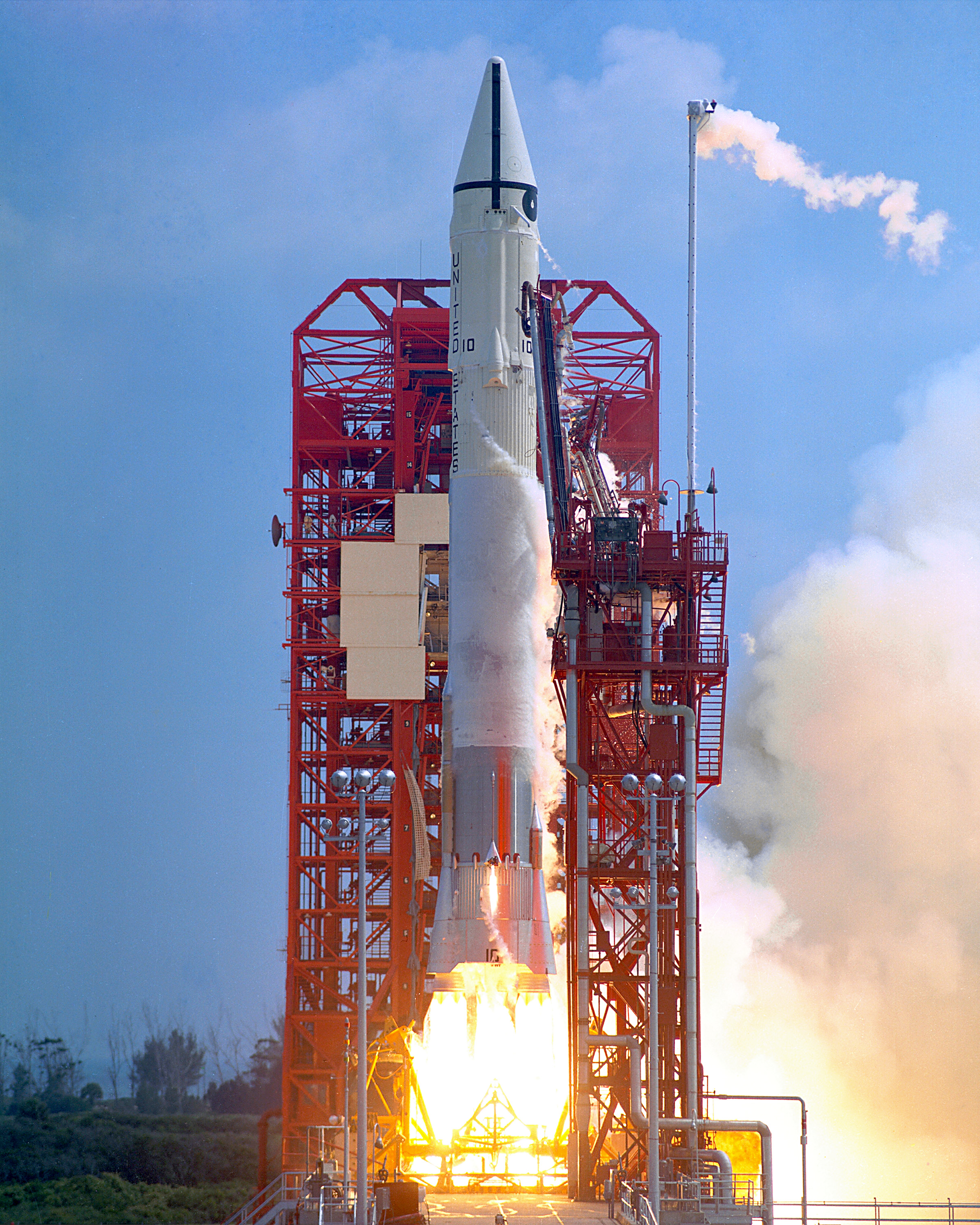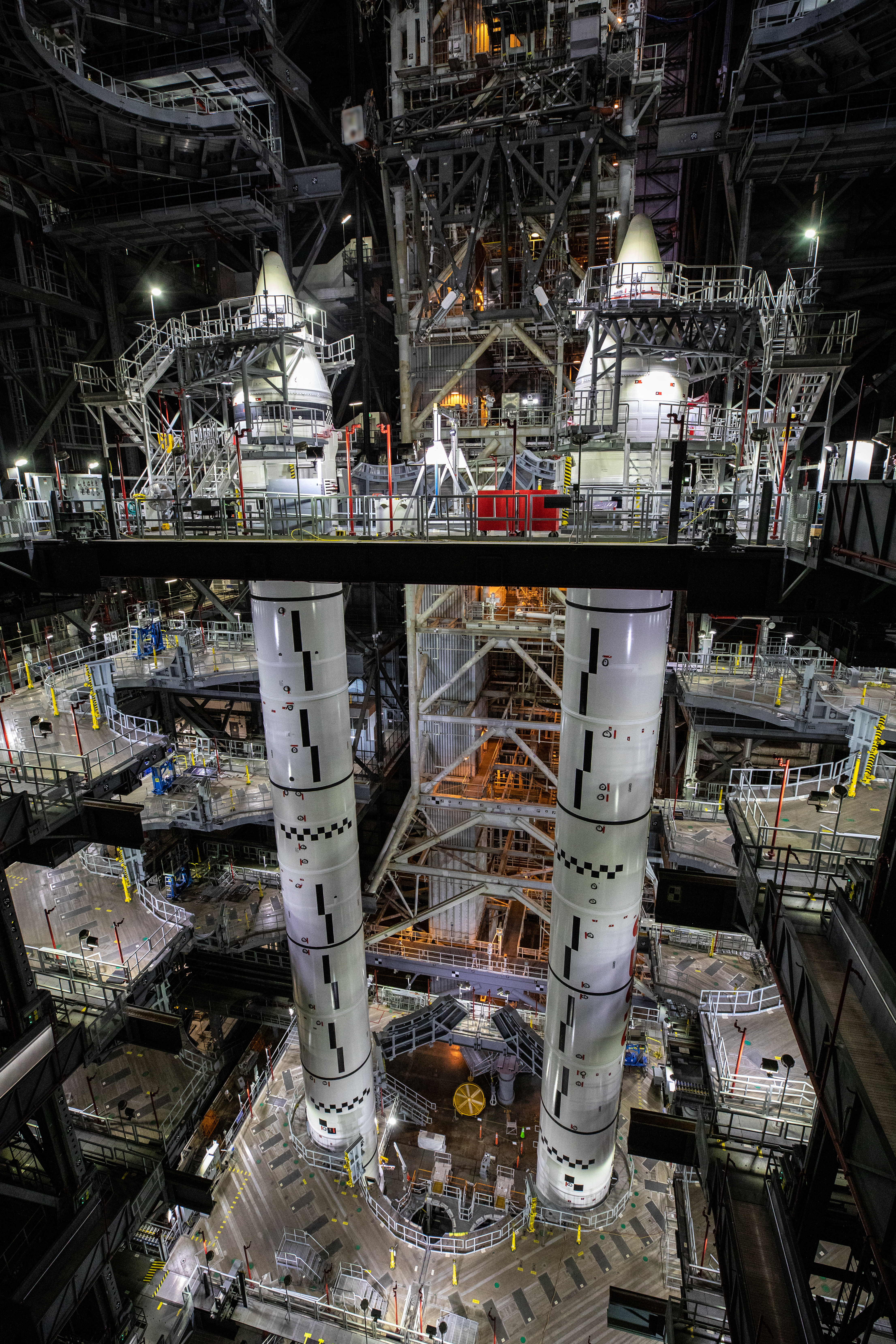|
Gravity-1
Gravity-1 ( zh, 引力一号) is a solid-propellant expendable medium-lift launch vehicle designed, manufactured and launched by Chinese aerospace company Orienspace. It can carry a payload of up to to LEO or to SSO, enabling the deployment of large-scale satellite constellations. The rocket has a height of 30 meters, a take-off weight of 400 tonnes, a take-off thrust of 600 tonnes, and a fairing diameter of 4.2 meters. Its maiden launch was conducted from a sea launch platform in the Yellow Sea on January 11, 2024, breaking records as both the world's most powerful solid-fuel carrier rocket and China's most powerful commercial launch vehicle to date. Large pieces of debris were seen during the launch, which carried 3 Yunyao-1 meteorological satellites built by the Shanghai Academy of Spaceflight Technology The Shanghai Academy of Spaceflight Technology (SAST) is a Chinese space agency and subordinate of China Aerospace Science and Technology Corporation (CASC), it is ref ... [...More Info...] [...Related Items...] OR: [Wikipedia] [Google] [Baidu] |
Orienspace
Orienspace Technology (Shandong) Co., Ltd (Orienspace for short) is a commercial aerospace enterprise in China founded in 2020. The company designs and manufactures Gravity Series launch vehicles and Force Series rocket engines. Background Orienspace is headquartered in Shandong Province, where an assembly, integration and test center is being built for future activities. The company also established an R&D center in Beijing Office and a headquarters of aerospace propulsion technology in Wuxi, Jiangsu Province. As of October 2023, Orienspace has raised four rounds of financing, totaling over 150 million USD. In January 2024, Orienspace Secures 600 Million Yuan Funding for Rocket Development Amid Soaring Demand in China Product lineup Gravity-1 is a solid-propellant medium-lift launch vehicle that can carry a payload of up to 6.5 tons to LEO or 4.2 tons to SSO, enabling the deployment of large-scale satellite constellations. Its maiden flight was conducted on 11 Januar ... [...More Info...] [...Related Items...] OR: [Wikipedia] [Google] [Baidu] |
Floating Launch Vehicle Operations Platform
A floating launch vehicle operations platform is a marine vessel used for launch or landing operations of an orbital spaceflight, orbital launch vehicle by a launch service provider: putting satellites into orbit around Earth or another celestial body, or recovering First stage (rocketry), first-stage boosters from orbital-class flights by making a propulsive landing on the platform. In the early decades of spaceflight technology, all orbital launch vehicle operations were exclusively from land, and all booster stages were expendable launch system, expended after a single use for nearly 60 years after the first orbital spaceflight, Sputnik 1. After the late 1990s and into the 2010s, new marine options for launch were built. Landing of orbital-class boosters began to be accomplished in 2015. More platforms, both for launch and landing, are currently in construction or planned. Suborbital spaceflight, Suborbital sounding rocket, rockets and submarine launched ballistic missiles, ... [...More Info...] [...Related Items...] OR: [Wikipedia] [Google] [Baidu] |
Medium-lift Launch Vehicle
A medium-lift launch vehicle (MLV) is a rocket launch vehicle that is capable of lifting between by NASA classification or between by Russian classification of payload into low Earth orbit (LEO).50t payloads" An MLV is between a small-lift launch vehicle and a heavy-lift launch vehicle. Medium-lift vehicles comprise the majority of orbital launches , with both the Soyuz and Falcon 9 having launched several hundred times. History Soviet Union and Russia The Soviet R-7 family was based on the world's first intercontinental ballistic missile (ICBM). Sputnik was a small-lift derivative that carried the first satellite into orbit, and the R-7 design quickly grew in capacity, with Luna launching in 1958. The 1960s saw the R-7 series continue to develop, with Vostok 1 carrying the first human into space, Voskhod carrying multiple crew members, and the first Soyuz. , Soyuz variants are still operational and have launched over 1,100 times. The R-7 family has launched more times ... [...More Info...] [...Related Items...] OR: [Wikipedia] [Google] [Baidu] |
Haiyang
Haiyang (), is a coastal city in the Shandong province in eastern China, located on the Yellow Sea (southern) coast of the Shandong Peninsula. Its name translates directly to "ocean" (海) and "sun" (阳) in Mandarin. It is a county-level city under the administration of the prefecture-level city of Yantai and was the host city for the 2012 Asian Beach Games. It is also the site of the new Haiyang Nuclear Power Plant and in 2021, became China's first city to fully utilize nuclear energy for its district heating system. Haiyang is the hometown of writer Sun Junqing (), whose 1962 work about the hope for a better year of farming in 1963 after the Great Chinese Famine is part of the Putonghua Proficiency Test. Geography Administrative Divisions As of 2012, Haiyang administers four subdistricts and 9 towns: Climate History Historical affiliation Haiyang was first settled with Laiyi people, one of the peripheral Chinese ethnic minorities, some 2,300 years ago, and w ... [...More Info...] [...Related Items...] OR: [Wikipedia] [Google] [Baidu] |
Solid Rocket Booster
A solid rocket booster (SRB) is a solid propellant motor used to provide thrust in spacecraft launches from initial launch through the first ascent. Many launch vehicles, including the Atlas V, SLS and Space Shuttle, have used SRBs to give launch vehicles much of the thrust required to place the vehicle into orbit. The Space Shuttle used two Space Shuttle SRBs, which were the largest solid propellant motors ever built until the Space Launch System and the first designed for recovery and reuse. The propellant for each solid rocket motor on the Space Shuttle weighed approximately 500,000 kilograms.. Advantages Compared to liquid propellant rockets, the solid-propellant motors (SRMs) have been capable of providing large amounts of thrust with a relatively simple design. They provide greater thrust without significant refrigeration and insulation requirements, and produce large amounts of thrust for their size. Adding detachable SRBs to a vehicle also powered by liquid-propel ... [...More Info...] [...Related Items...] OR: [Wikipedia] [Google] [Baidu] |
Shanghai Academy Of Spaceflight Technology
The Shanghai Academy of Spaceflight Technology (SAST) is a Chinese space agency and subordinate of China Aerospace Science and Technology Corporation (CASC), it is referred to as ''The Eighth Academy'' of CASC. The agency was established in August 1961 as ''Shanghai Second Bureau of Electromechanical Industry'', but was later renamed to ''Shanghai Academy of Spaceflight Technology'' in 1993. Space flight programmes SAST designs, develops, and manufactures launch vehicles as well as components. They designed and manufactured the Long March 2D, the entire Long March 4 series and FB-1 rockets. The FB-1 launched three military satellites, no details of which have been published. SAST was held responsible for the FB-1 failures between 1973 and 1981. As of 2024, SAST also designs, develops, and Manufactures launch Vehicles and Satellites. The Long March 2D, Long March 4B, Long March 4C, Long March 6, Long March 6A The Long March 6A () or Chang Zheng 6A as in pinyin, abbreviated ... [...More Info...] [...Related Items...] OR: [Wikipedia] [Google] [Baidu] |
SpaceNews
''SpaceNews'' is a print and digital publication that covers business and political news in the space and satellite industry. ''SpaceNews'' provides news, commentary and analysis to an audience of government officials, politicians and executives within the space industry. ''SpaceNews'' details topics in civil, military and space and the satellite communications business. ''SpaceNews'' covers important news in North America, Europe, Asia, Africa, the Middle East and South America from NASA, the European Space Agency, and private spaceflight firms such as Arianespace, International Launch Services, SpaceX and United Launch Alliance. The magazine regularly features profiles on relevant and important figures within the space industry. These profiles have featured numerous government leaders, corporate executives and other knowledgeable space experts, including NASA administrators Richard Truly, Daniel Goldin, Sean O’Keefe, Michael Griffin and Charles Boldin. Founded in 198 ... [...More Info...] [...Related Items...] OR: [Wikipedia] [Google] [Baidu] |
Space Launch Market Competition
Space launch market competition is the manifestation of market forces in the launch service provider business. In particular it is the trend of competitive dynamics among payload transport capabilities at diverse prices having a greater influence on launch purchasing than the traditional political considerations of country of manufacture or the national entity using, regulating or licensing the launch service. Following the advent of spaceflight technology in the late 1950s, space launch services came into being, exclusively by national programs. Later in the 20th century commercial operators became important customers of launch providers. International competition for the communications satellite payload subset of the launch market was increasingly influenced by commercial considerations. However, even during this period, for both commercial- and government-entity-launched commsats, the launch service providers for these payloads used launch vehicles built to government s ... [...More Info...] [...Related Items...] OR: [Wikipedia] [Google] [Baidu] |
Carrier Rocket
A launch vehicle is typically a rocket-powered vehicle designed to carry a payload (a crewed spacecraft or satellites) from Earth's surface or lower atmosphere to outer space. The most common form is the ballistic missile-shaped multistage rocket, but the term is more general and also encompasses vehicles like the Space Shuttle. Most launch vehicles operate from a launch pad, supported by a launch control center and systems such as vehicle assembly and fueling. Launch vehicles are engineered with advanced aerodynamics and technologies, which contribute to high operating costs. An orbital launch vehicle must lift its payload at least to the boundary of space, approximately and accelerate it to a horizontal velocity of at least . Suborbital vehicles launch their payloads to lower velocity or are launched at elevation angles greater than horizontal. Practical orbital launch vehicles use chemical propellants such as solid fuel, liquid hydrogen, kerosene, liquid oxygen, ... [...More Info...] [...Related Items...] OR: [Wikipedia] [Google] [Baidu] |
Maiden Flight
The maiden flight, also known as first flight, of an aircraft is the first occasion on which it leaves the ground under its own power. The same term is also used for the first launch of rockets. In the early days of aviation it could be dangerous, because the exact handling characteristics of the aircraft were generally unknown. The maiden flight of a new type is almost invariably flown by a highly experienced test pilot. Maiden flights are usually accompanied by a chase plane, to verify items like altitude, airspeed, and general airworthiness. A maiden flight is only one stage in the development of an aircraft type. Unless the type is a pure research aircraft (such as the X-15), the aircraft must be tested extensively to ensure that it delivers the desired performance with an acceptable margin of safety. In the case of civilian aircraft, a new type must be certified by a governing agency (such as the Federal Aviation Administration in the United States) before it can enter ... [...More Info...] [...Related Items...] OR: [Wikipedia] [Google] [Baidu] |
Yellow Sea
The Yellow Sea, also known as the North Sea, is a marginal sea of the Western Pacific Ocean located between mainland China and the Korean Peninsula, and can be considered the northwestern part of the East China Sea. Names It is one of four seas named after color terms (the others being the Black Sea, the Red Sea and the White Sea), and its name is descriptive of the golden-yellow color of the silt-ridden water discharged from major rivers. The innermost bay of northwestern Yellow Sea is called the Bohai Sea (previously Gulf of Zhili / Beizhili), into which flow some of the most important rivers of northern China, such as the Yellow River (through Shandong province and its capital Jinan), the Hai River (through Beijing and Tianjin) and the Liao River (through Liaoning province). The northeastern extension of the Yellow Sea is called the Korea Bay, into which flow the Yalu River, the Chongchon River and the Taedong River. Geography Extent The International Hydrographi ... [...More Info...] [...Related Items...] OR: [Wikipedia] [Google] [Baidu] |



